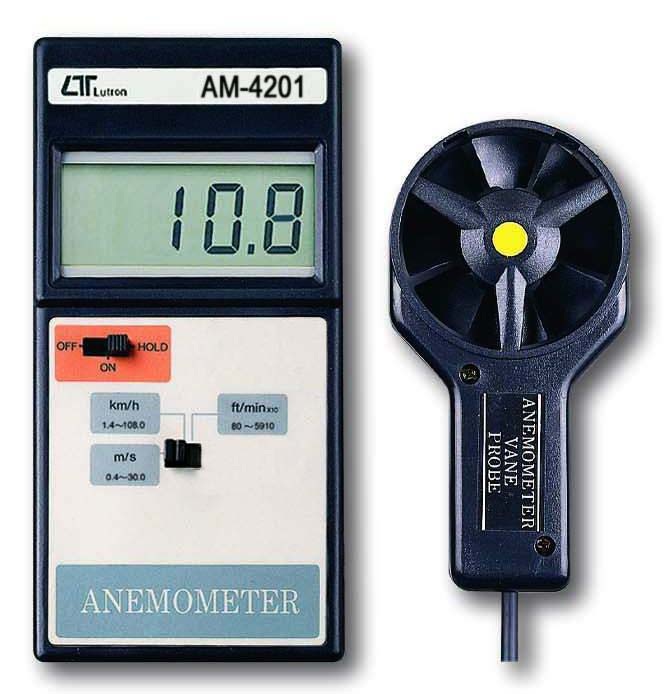Understanding Various Types of Anemometers for Different Applications
Understanding Various Types of Anemometers for Different Applications
Blog Article
Anemometers Unveiled: Recognizing Their Importance in Ecological Monitoring and Safety And Security Measures
The duty of anemometers in environmental surveillance and safety actions is commonly undervalued, yet their importance is obvious. From weather forecasting to air travel safety, anemometers play a crucial role in supplying precise data that notifies decision-making processes and improves overall security.
History of Anemometers
The development of anemometers can be mapped back to the old worlds where simple wind gauging tools were initial made use of. One of the earliest known anemometers was the hemispherical cup anemometer designed by Leon Battista Alberti in the 15th century.
Over the years, innovations in technology led to the advancement of even more modern anemometers, consisting of ultrasonic anemometers and laser Doppler anemometers, using raised accuracy and performance in gauging wind speed and direction. The background of anemometers showcases an amazing trip of technology and development in the field of weather forecasting.
Kinds Of Anemometers
Throughout the field of meteorology, various kinds of anemometers have been created to properly gauge wind speed and instructions. One of the most common kind is the mug anemometer, which consists of 3 or 4 cups placed on straight arms that turn with the wind. As the cups rotate, the rate at which they rotate is straight proportional to the wind rate. One more extensively used kind is the vane anemometer, which includes a tail or fin that aligns itself with the wind direction. This positioning enables the device to determine the wind direction. Sonic anemometers utilize ultrasonic signals to determine wind rate and instructions properly. They are generally utilized in research study applications because of their high precision. Hot-wire anemometers run based upon the principle that the cooling effect of wind on a warmed wire is symmetrical to the wind rate. These anemometers appropriate for gauging low wind speeds with high accuracy. Each sort of anemometer has its staminas and is selected based on the specific demands of the surveillance job available.
Applications in Weather Forecasting
Having actually talked about the different kinds of anemometers utilized in weather forecasting for determining wind speed and instructions, it is vital to explore their practical applications in the field. Anemometers play a crucial duty in weather forecasting by offering accurate and real-time data on wind problems (anemometer). Meteorologists use anemometers to keep track of wind speed and direction to forecast weather condition patterns, issue warnings for extreme weather condition occasions like cyclones, tornadoes, and tornados, and evaluate climatic conditions for air travel security
In meteorology, anemometers help in comprehending local and regional wind patterns, which are essential for predicting weather changes and establishing weather patterns. These devices are also made use of in research study to examine microclimates, metropolitan heat islands, and air contamination dispersion. Additionally, anemometers are employed in farming to optimize crop management techniques, such as watering and chemical application, based upon wind conditions.
Relevance in Aviation Safety And Security
An indispensable facet of ensuring aeronautics security hinges on the precise tracking of wind conditions making use of anemometers. Anemometers play an essential role in air travel by giving real-time information on wind speed and direction, helping pilots in making informed decisions throughout take-off, landing, and trip. Unforeseeable and strong winds can dramatically impact airplane procedures, making it vital for aeronautics authorities to count on precise wind dimensions to ensure the security of travelers and team.

In the vibrant setting of air travel, where even small changes in wind rate and instructions can have extensive results, anemometers stand as important devices for promoting safe and risk-free air traveling.
Role in Environmental Research
Anemometers play an essential role in ecological study by supplying crucial information on wind speed and instructions. By properly determining wind qualities, anemometers aid researchers analyze the movement of contaminants in the air, analyze the influence of commercial emissions, and predict the spread of impurities in the environment.


Verdict
In verdict, anemometers have played an essential duty in ecological monitoring internet and safety steps. With an abundant background and different kinds offered, these devices have been widely used in meteorology, aviation safety and security, and environmental research study. Understanding the importance of anemometers is crucial for precisely measuring wind speed and direction, which is crucial for forecasting weather condition patterns, making certain safe aeronautics operations, and performing ecological researches - anemometer. Their contributions to these areas can not be underestimated. you could try these out
One of the earliest known anemometers was the hemispherical cup anemometer designed by Leon Battista Alberti in the 15th century. Over the years, developments in innovation led to the advancement of even more modern anemometers, consisting of ultrasonic anemometers and laser Doppler anemometers, supplying enhanced accuracy and effectiveness in measuring wind rate and direction. Hot-wire anemometers operate based on the concept that the cooling result of wind on a heated cord is proportional to the wind rate. Meteorologists utilize anemometers to keep track of wind speed and direction to forecast climate patterns, problem cautions for serious weather condition events like tornados, hurricanes, and hurricanes, and evaluate climatic conditions for aviation safety.
Comprehending the importance of anemometers is vital for accurately gauging wind rate and instructions, which is crucial for anticipating climate patterns, making certain safe aviation procedures, and conducting ecological studies. (anemometer)
Report this page